City To Summit
The cities of Salzburg, Graz and Innsbruck are more than just gateways to the mountains, they are centres for cultural and culinary life in Austria. Be sure to spend time exploring them.
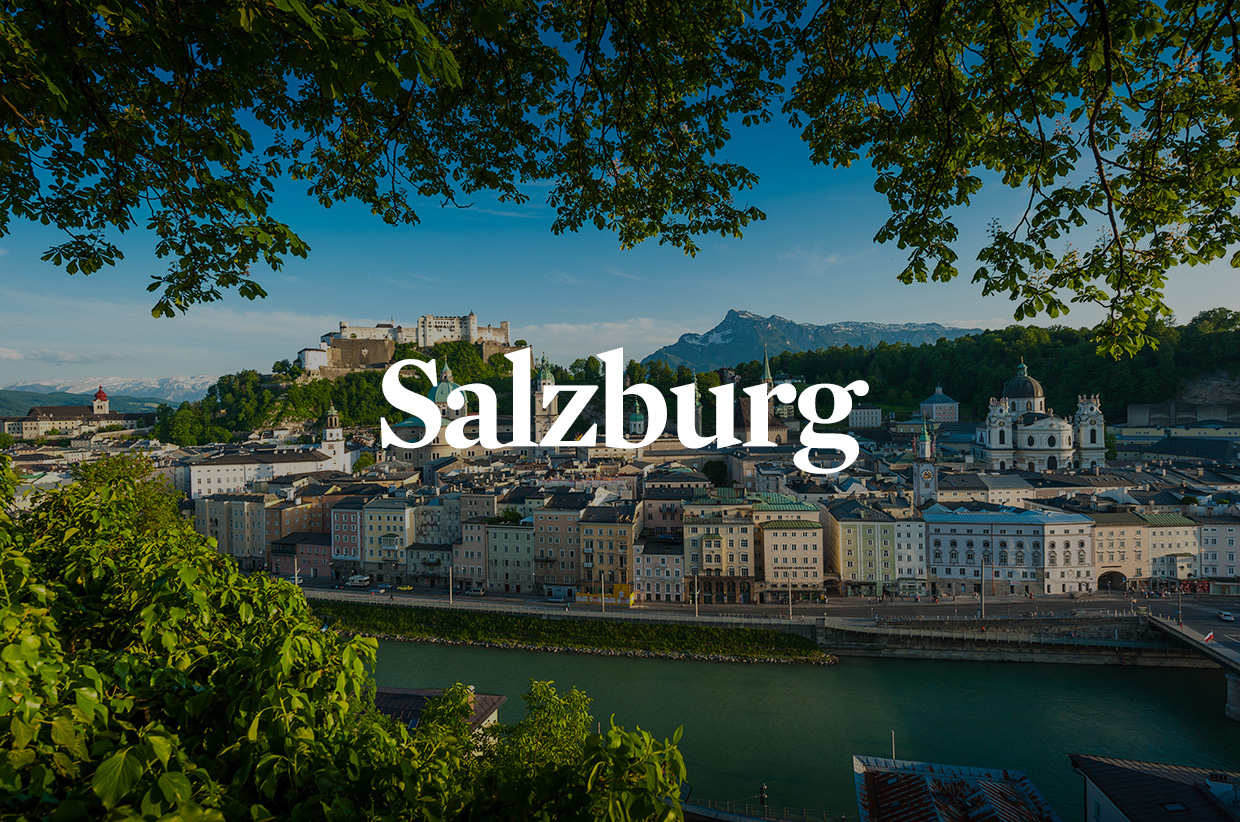
As well as being the city of music and culture, Salzburg is also an exceptional starting place for outdoors adventures.
Nothing prepares you for seeing Salzburg for the first time. The perfectly preserved baroque Altstadt (Old Town) makes for one of the most picturesque cities in Europe. The UNESCO World Heritage Site of the Altstadt is hemmed in by five mountains, and atop one is Hohensalzburg Castle, one of the largest medieval monuments in Europe. Enjoy hiking up to the fortress and along the winding trails through unspoilt nature for stunning views over the baroque towers of the city. After your city exploration, relax at one of the cosy coffee houses or meet the locals at an inn, where Salzburg’s 600-year-old beer tradition can be experienced with all senses. Yet it is perhaps music that the city is best known for: as the birthplace of W. A. Mozart, as the stage for the famous and glamorous Salzburg Festival and as the film location for The Sound of Music. Every summer, the Salzburg Festival, acclaimed for its musical programme, transforms the city into a buzzing centre for more than 250,000 culture lovers from around the globe to enjoy opera, theatre and concerts. Salzburg attracts visitors year round with about 4,500 cultural events every year.
12 hours in Salzburg
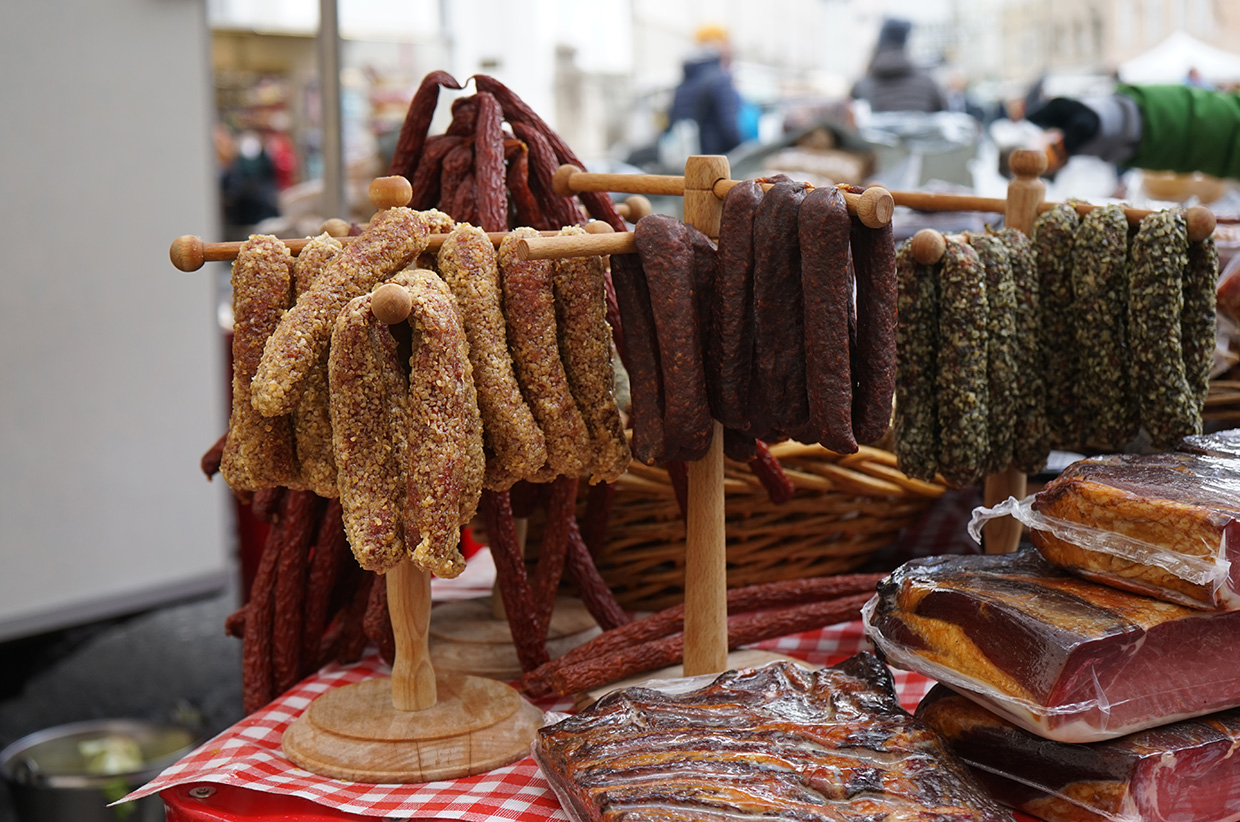
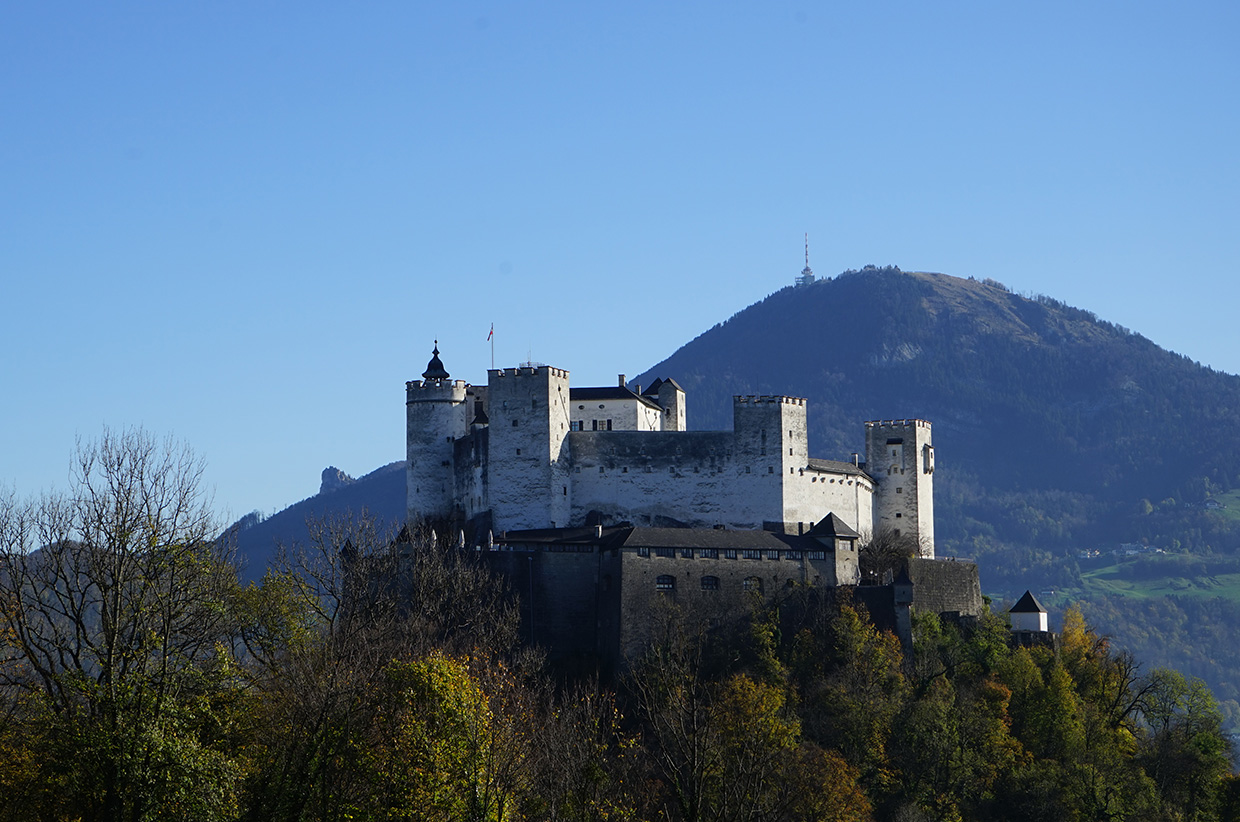
Is there a more evocative sight in Austria than looking up at the Hohensalzburg Castle from the baroque Old Town of Salzburg? This small and beautifully-formed city is a cultural powerhouse, best known for being the setting for The Sound of Music and the birthplace of Wolfgang Amadeus Mozart. Beyond the city walls is the best of Tirol, but be sure to spend a day or two uncovering the secrets of the city.
9.00am. Grab a quick coffee at Kaffee-Alchemie and the walk through the old town to Stiftsbäckerei St Peter bakery. It has been serving hot buns for hundreds of years. Buy a couple with some cheese for a picnic.
10.30am. Salzburg Altstadt is surrounded by hills. High on top of the Festungsberg is the imposing Hohensalzburg Castle. Head up the steep paths and take time to wander its armoury, puppet museum and art collection.
12noon. Time for a picnic admiring the views over Salzburg and to the Alps beyond.
1.00pm. From the castle follow the tracks around the Festungsberg mountains, signposted to the Museum der Moderne. Be sure to stop at Richterhöhe along the way, an old fort in a walled garden with just the most amazing views over the mountains.
2.00pm. Spend some time wandering the Museum der Moderne and its grounds before dropping down the lift back into the Altstadt. Here, spend a leisurely afternoon walking among the Baroque masterpieces of Salzburg, perhaps dropping into Mozart’s Birthplace and Salzburg Cathedral. Be sure to stop for some chocolate at Holzermayr.
6.00pm. There are several good food options in the city. Across the river is Gasthof Alter Fuchs that serves quality traditional food in cosy surroundings. Beer lovers may want to walk to Augustiner Braustubl for an authentic Austrian beer hall experience.
Written by Daniel Neilson

Known as the Capital of the Alps, this city seamlessly blends alpine, urban and imperial splendour amidst majestic mountain scenery.
Innsbruck is where the city meets the Alps. It is easily accessible by train and plane, yet right in the heart of Tirol. The mountains seem part of the city, and a cable car can even carry you from the middle of the Old City up to 2,000m in a mere 20 minutes. Innsbruck itself is one of the great Imperial cities. From the lavish Hofburg Imperial Palace, inhabited by Emperor Maximilian I in the 15th century, to his tomb in the Hofkirche Court Church, the opulence of the era defines the city. Even its summer festivals and Promenade Festivals remember the Imperial age. Far from living in the past, however, Innsbruck is a young and vibrant city with a big student population. The capital of Tirol is the perfect launching place for adventures in the mountains.
Next summer, Innsbruck will host two world championships: the UCI Road World Championships (22-30 September) and the IFSC Climbing World Championships (6-16 September). It’s a nod to what many knew already: that Innsbruck is a paradise for cyclists and climbers wanting to explore the nearby mountains.
12 hours in Innsbruck


12 hours in Innsbruck
Innsbruck is a city defined by the Alps. Within 20 minutes you can be 2,000 metres high in the mountains, straight from the heart of one of Europe’s great Imperial cities. Take time to explore this beautiful city, enjoying its splendour and try and catch one of its abundant summer festivals.
9.00am. Little happens in Austria before a coffee. Why not hit Tirol’s oldest coffee café, Konditorei Munding, for spectacular macarons.
10.00am. Innsbruck’s golden ticket is the Goldenes Dachl, a building dating back to 1500 and decorated with 2,657 fire-gilded copper tiles. Then head to the Hofburg Imperial Palace to wonder at the opulence of Emperor Maximilian I. Then see his cenotaph at the Hofkirche Silver Chapel. For more Imperial grandeur and a jaw-dropping art collection, visit the Schloss Ambras.
12noon. Time to leave the culture behind and head for the hills. But in Innsbruck, you don’t even need to leave the city. From the heart of the Old City, you can take the Nordkette Cable Car that will hoist beyond 2,000 metres into the Karwendel Nature Park. The summit, Hafelekarspitze, is a 15-minute walk from the Hafelekar station. Up here there are countless hiking and mountain biking trails.
6.00pm. Start thinking about dinner. For an upmarket take on traditional food then head to Restaurant 1809. Perhaps most interesting is Die Wilderin, a restaurant focussing on local ingredients, some of it foraged. For bars, the Invinum wine bar has plenty of crisp Austrian wines.
Written by Daniel Neilson

Young, vibrant, artistic and full of culinary delights, what’s not to like about the capital of Styria?
The Old Town of Graz, a UNESCO World Cultural Heritage Site, courageously sets itself apart from other historically significant cities with its spectacular modern architecture. Outstanding architectural masterpieces such as the artificial Island in the Mur and the unmissable Kunsthaus Graz art museum, known as the ‘Friendly Alien’, are symbols of modernism and growth, sitting next to historical treasures like the facade of the Herzoghof building in the city centre, and the Old-German-style town hall, completed in 1893. Don’t miss the Styrian Armoury either, the biggest of its kind in the world.
However, it is perhaps Graz’s reputation for culinary pursuits that really sets it apart. The region’s Mediterranean climate may add to the city’s laid-back lifestyle, but it also provides perfect conditions for growing fruit and vegetables, and in particular the wines.
12 hours in Graz
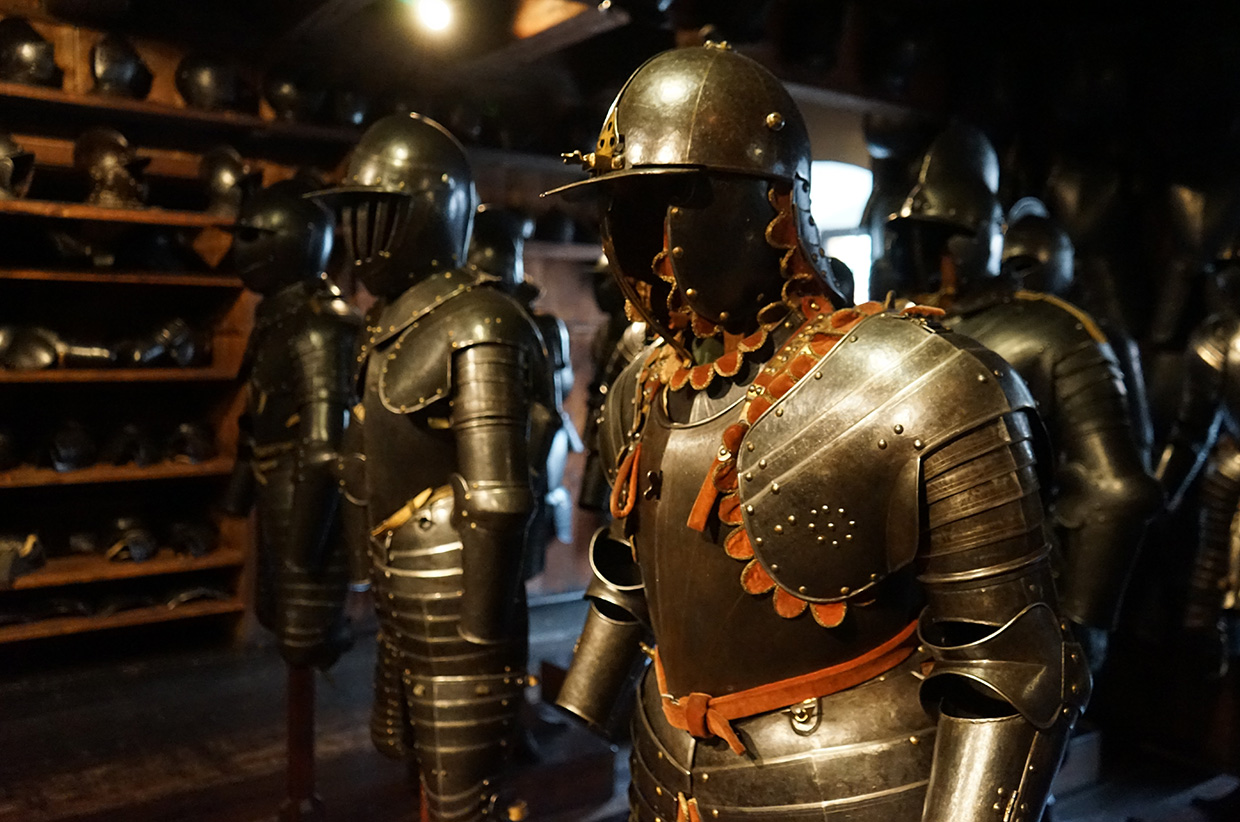
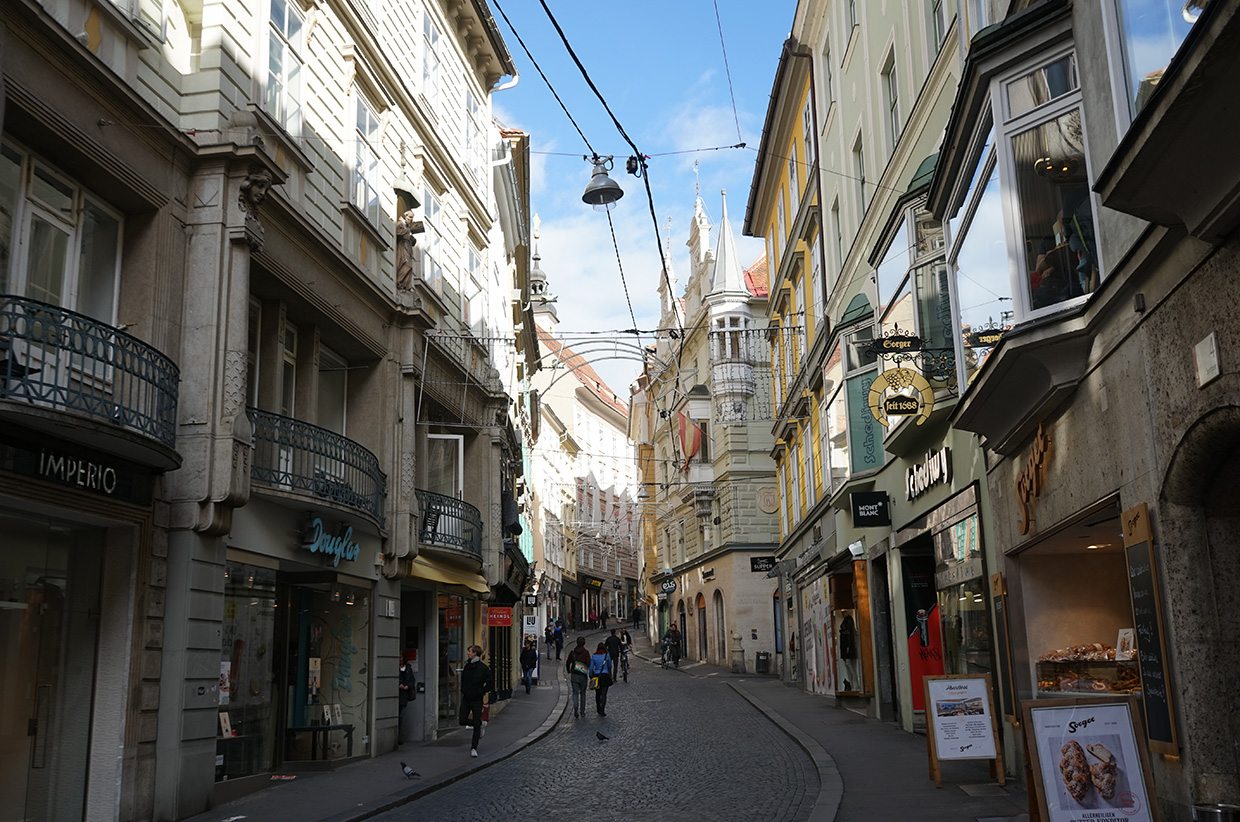
Graz: Austria’s second largest city, the capital of the state of Styria, and the gateway to the adventures that fill the country’s south-eastern corner. Despite being at a significant crossroads, you need to spend some time in this vibrant, young city exploring its UNESCO status old town and, most of all, enjoying its food scene.
9.00am. Start with a fabulous coffee and pastry at Aroom Kaffeebar and steel yourself for a walk up the narrow cobbled streets to Schlossberg, the hill that dominates city and topped with Uhrturm clock tower. Admire the red-tiled roofs below and the hills beyond.
11.00am. Visit the Landeszeughaus. The Styrian Armoury at Herrengasse 16, is the world’s most extensive historical armoury and holds an astonishing array of armour and weaponry. As well as the impressive craftsmanship, it provides a valuable context for the region’s history.
1.00pm. Styria is the garden of Austria, known for its excellent produce and superlative wines. Drop into Glöckl Bräu for a traditional meal.
2.00pm. From the traditional old town to the modern and unmissable (literally) Kunsthaus. The Graz Art Museum is affectionally known as the ‘friendly alien’ by its designers. This example of blob architecture certainly divided opinion, but today it is part of the town’s fabric. Approach it using the Murinsel, an artificial island in the middle of the Mur River that runs through the city.
6.00pm. Book a table at Der Steirer, a contemporary restaurant that celebrates the best of Styrian food and wine. Grab a few of the beautifully-presented ‘Styrian tapas’ and ask for a wine suggestion.
9.00pm. Do as Graz residents do and head into town enjoying a small glass of wine at Bar Albert.
Written by Daniel Neilson



